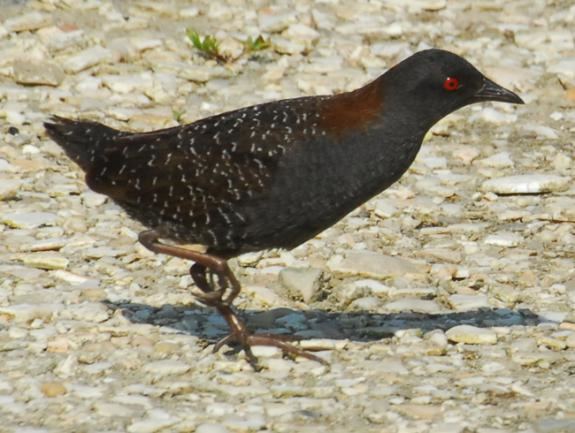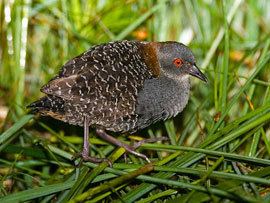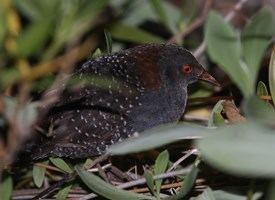Phylum Chordata Family Rallidae Scientific name Laterallus jamaicensis Rank Species | ||
 | ||
Similar Bird, Rallidae, Laterallus, Clapper rail, Yellow rail | ||
2013 12 04 black rail release
The black rail (Laterallus jamaicensis) is a mouse-sized member of the bird family Rallidae. It is found in scattered parts of North America and the Pacific region of South America, usually in coastal salt marshes but also in some freshwater marshes. It is extinct or threatened in many locations due to habitat loss. The largest populations in North America are in Florida and California.
Contents

Black rails appear to be omnivorous, feeding primarily on small invertebrates but also on seeds of some marsh plants. They are preyed upon by many avian (including hawks, egrets, and herons) and mammalian (including foxes and cats) predators and rely on the cover of thick marsh vegetation for protection. They are territorial and call loudly and frequently during the mating season.

The black rail is rarely seen and prefers running in the cover of the dense marsh vegetation to flying. It will often make its presence known, however, with its distinctive ki-ki-krr call or an aggressive, presumably territorial, growl. The best opportunity to see a black rail is during an extremely high tide when the birds are forced out of the coastal marshes into nearby fields and brush for cover. These high tides are dangerous time for black rails as they are quite vulnerable to predation outside the marsh.

This bird has sometimes been considered conspecific with the Peruvian Junín crake (L. tuerosi) and the Galapagos crake (L. spilonotus).

